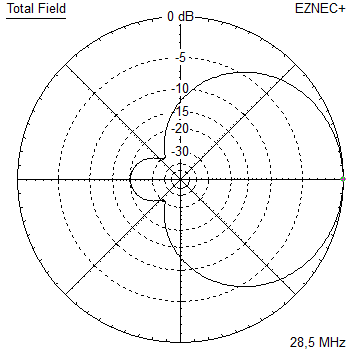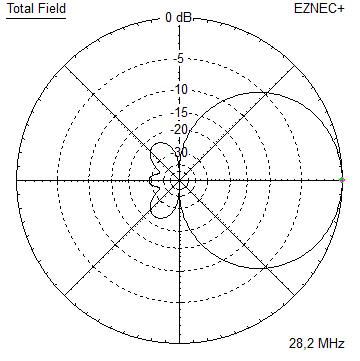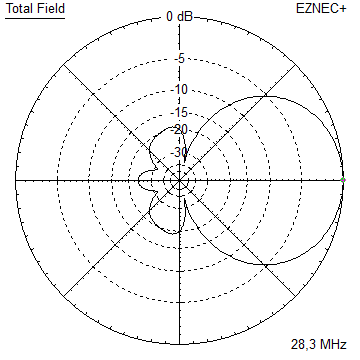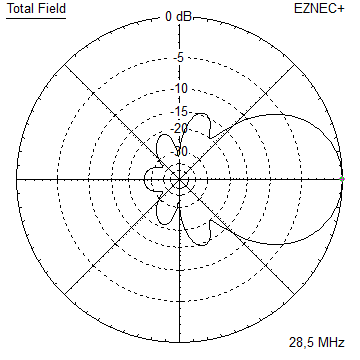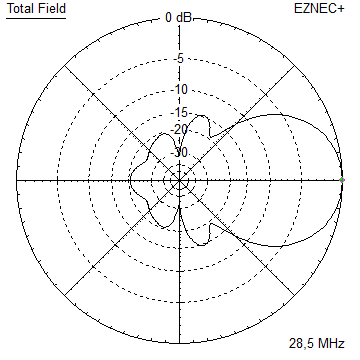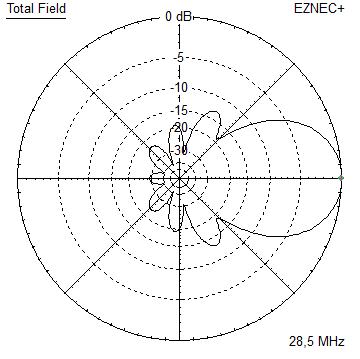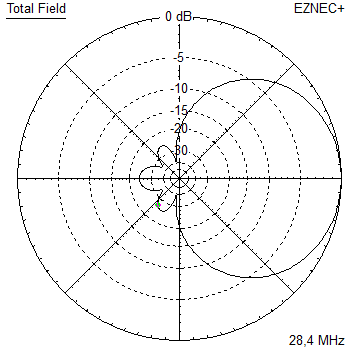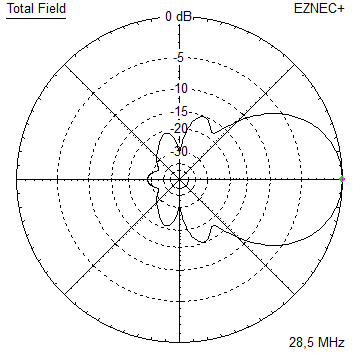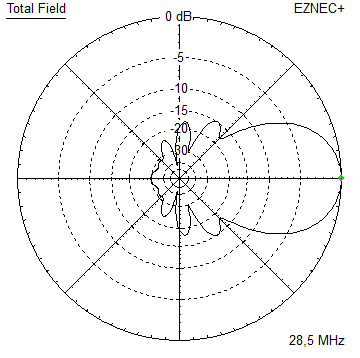
GTV 28-4w with bent Dipole
27.6 to 28.9 MHz with VSWR < 1:1.2 (Return Loss better -20 dB)
On 28 MHz we should less look for gain but very clean directivity, because if the band is open successful DX more or less comes down to fade out unwanted signals. If we can easily produce a signal that enables us to ping our own echo when twice (!) around the globe with less than 100 watts of output, we may pass on 0.5 dB gain. And when band is closed that little bit would not help at all.
The patterns scattering factor (dt.: Streufaktor) as ratio of all rear and side lobes against the beam lobe is what we should look for in first place.
Note: This is not a beginners Yagi. Like on VHF the bent dipole needs trimming regarding bending angle and final length. Thus you should be able to lower this Yagi for a few times on the mast easily for final trimming.
Design date of issue: 2023.04.21
GTV 28-4w built by Xu Da, BG5TOX.


Current distribution

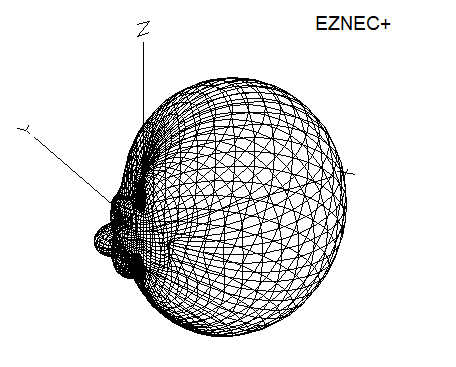
Performance Data (28.4 MHz, 16 mm el.)
Gain vs. isotr. Rad. 9.0 dBi Gain vs. Dipole 6.9 dBD -3 dB E-plane 59.4 deg. -3 dB H-plane 89.0 deg. F/B -23.9 dB F/R -20.9 dB Impedance 50 ohms Mechan. Length 5177 mm + 2 x 50 mm offset Electr. Length 0.49 λ Stacking Dist. h-pol. (28.4 MHz) top-to-bottom 7.53 m side-by-side 10.65 m
Geometry - Elements 16 mm insulated on boom:


How many pageviews did this design get since Apr. 2023?
Pattern and VSWR Plots
Elevation and Azimuth plot at 28.5 MHz


SWR and Return Loss plots - simulated with 4nec2


Radiation pattern with Ground Gain (28.5 MHz)
• At 8 m above perfect ground

Gain vs. isotr. Rad. 14.7 dBi at 18 deg. Gain vs. Dipole 12.6 dBD F/B -28.7 dB at 166 deg.• At 12 m above perfect ground

Gain vs. isotr. Rad. 14.9 dBi at 12 deg. Gain vs. Dipole 12.7 dBD F/B -25.2 dB at 169 deg.
• At 16 m above perfect ground

Gain vs. isotr. Rad. 14.6 dBi at 9 deg. Gain vs. Dipole 12.8 dBD F/B -25.1 dB at 171 deg.
• At 20 m above perfect ground

Main Lobe Gain vs. isotr. Rad. 15.0 dBi at 7 deg. Gain vs. Dipole 12.8 dBD 2nd Lobe Gain vs. isotr. Rad. 14.4 dBi at 23 deg. Gain vs. Dipole 12.2 dBD F/B -25.6dB at 173 deg.
Stacking: SIMULATION OF 2 x VERT. STACK ABOVE GROUND
1. Yagi 16 m agl, 2. Yagi +8 m = 24 m agl


Gain vs. isotr. Rad. 17.7 dBi at 7 deg. Gain vs. Dipole 15.5 dBD at 7 deg. F/B -24.9 dB at 173 deg.
Stacking: SIMULATION OF 2 x HORIZONTAL STACK 16 m ABOVE GROUND
Yagis 12m apart:






73, Hartmut, DG7YBN
